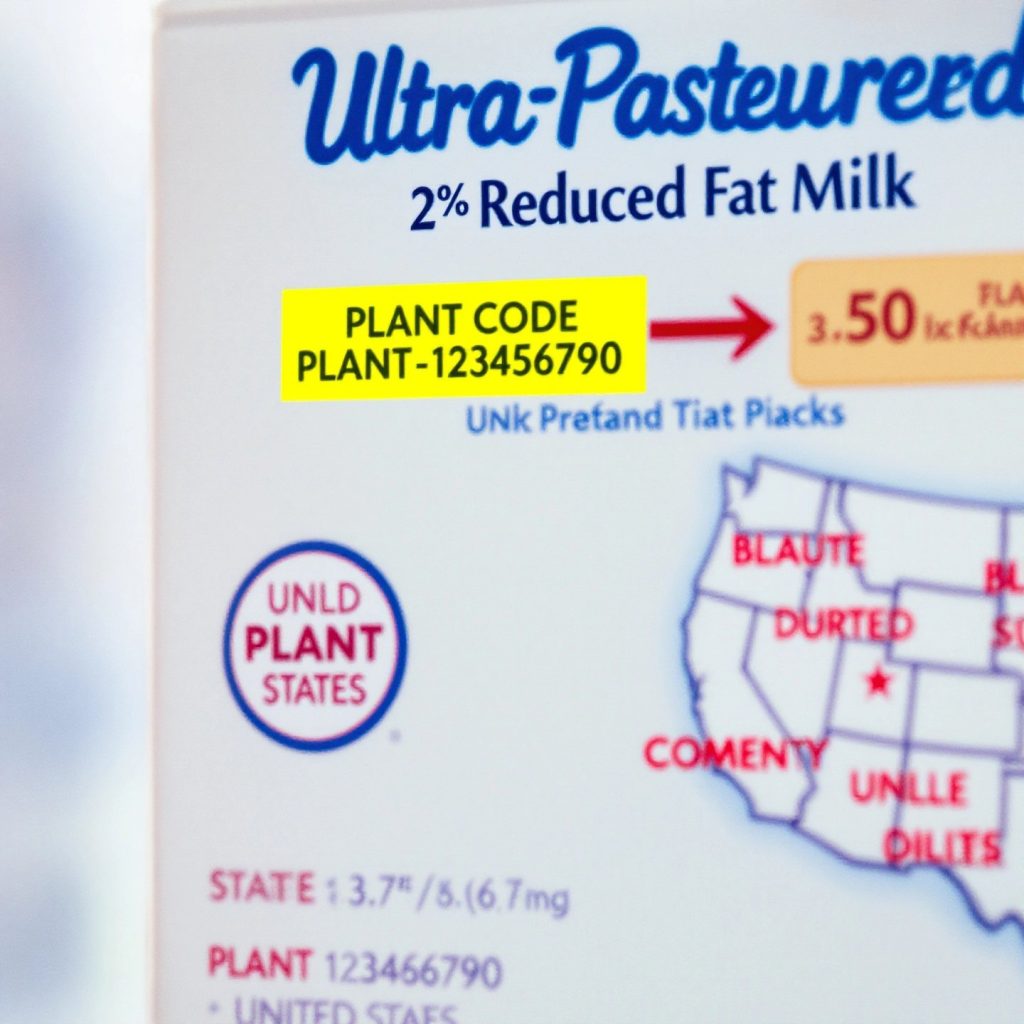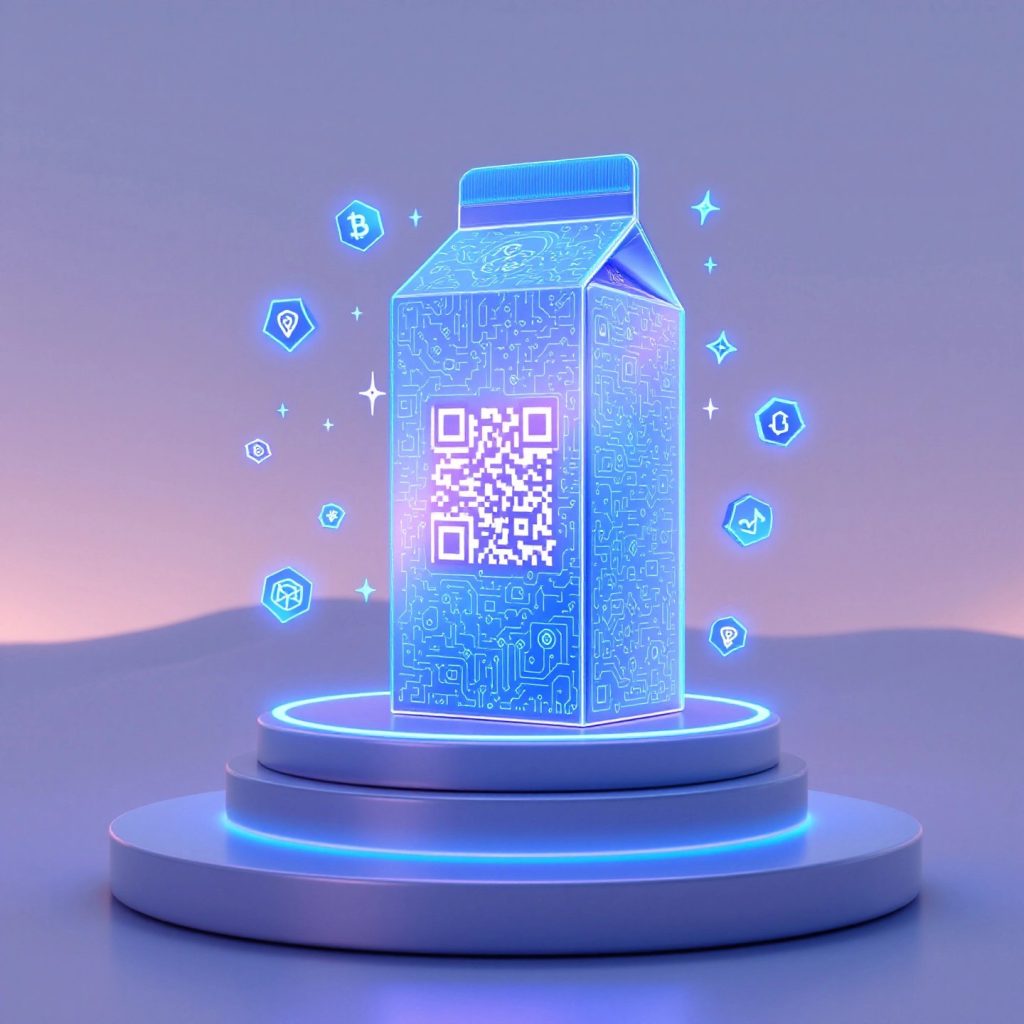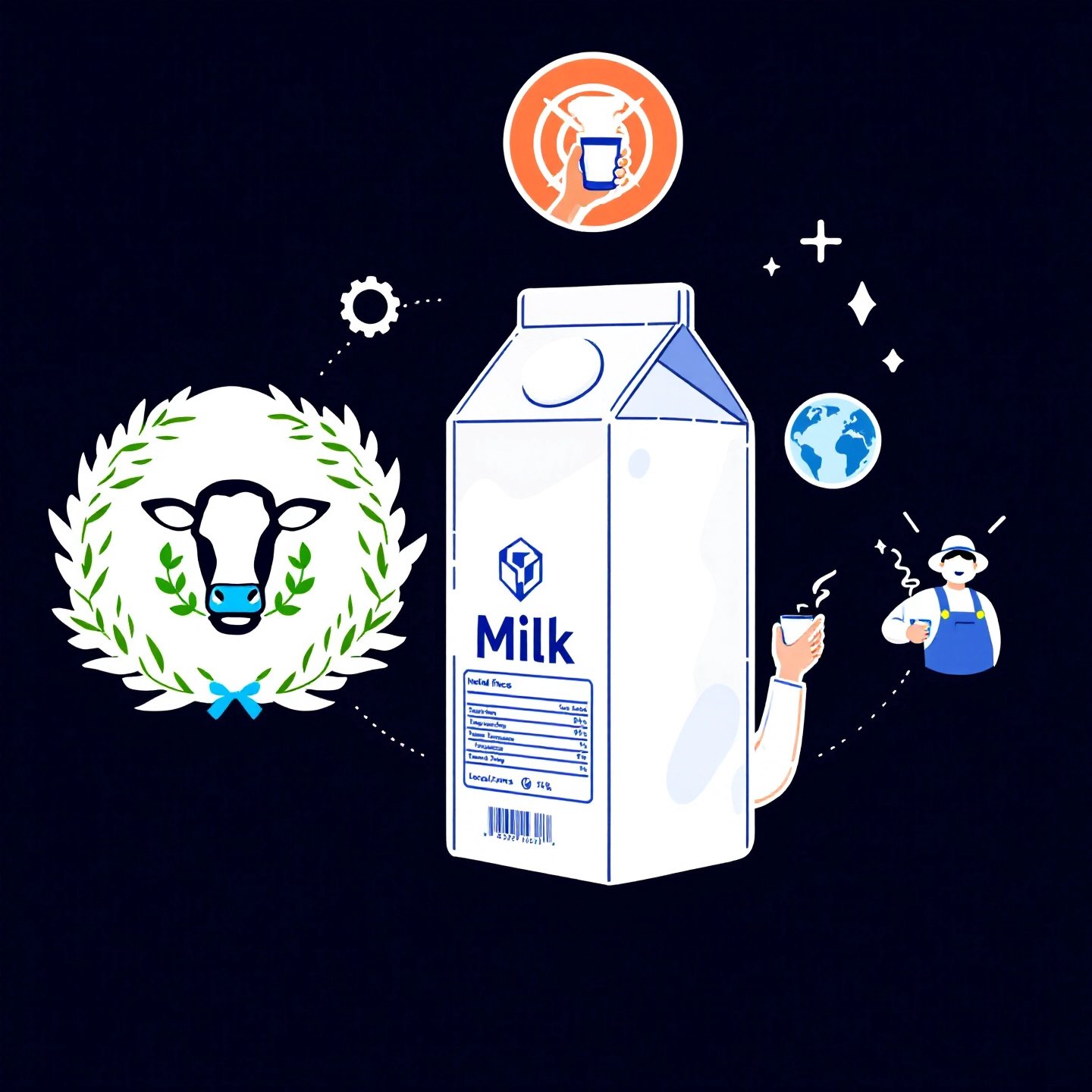Introduction: Understanding the Importance of Milk Plant Codes
In today’s world, where consumers are increasingly conscious about the origins of their food, milk plant codes have become a vital component of the dairy industry. These codes, often found on milk cartons and bottles, serve as a gateway to understanding the journey of dairy products from farm to fridge. By providing information about the specific plant where the milk was processed, these codes enhance transparency and allow consumers to trace their dairy products back to their source.
The significance of milk plant codes extends beyond mere curiosity. They play a crucial role in ensuring food safety and quality control, as they are regulated by authorities like the FDA and USDA. This transparency is not only a reassurance of the product’s authenticity but also empowers consumers to make informed decisions aligned with their values, such as supporting local dairies or choosing products from ethically responsible producers.
As awareness of dairy product traceability grows, more consumers are seeking to decode these plant codes to verify the origins of their milk. This guide is designed to help you navigate and understand milk plant codes, enabling you to make more informed choices about the dairy products you consume. Whether you are concerned about sustainability, quality, or simply curious about where your milk comes from, learning to interpret these codes can provide valuable insights into the dairy industry.

Milk plant codes provide essential traceability information, linking products to their processing plants (AI-generated)
What are Milk Plant Codes?
Milk plant codes are unique identifiers found on dairy product packaging, offering a crucial glimpse into the origin of the milk you consume. These codes are structured to include both state identifiers and plant-specific numbers, which together create a comprehensive traceability system. The state identifier is typically a two-digit code that corresponds to the state where the milk was processed, while the plant-specific number is a unique code assigned to each dairy plant within that state. For example, a code like ’37-275′ indicates that the milk was processed in a North Carolina plant with the specific identifier of 275.
The regulation of these codes falls under the purview of the Food and Drug Administration (FDA) and the United States Department of Agriculture (USDA), ensuring that dairy products meet stringent safety and quality standards. According to the FDA’s Interstate Milk Shippers List, these codes are a part of a voluntary national uniform coding system, which aids in maintaining consistent food safety protocols across the country. This system not only facilitates compliance with FDA dairy regulations but also helps in the event of a product recall, allowing for quick identification and removal of affected products from the market.
On the packaging of dairy products, you might find these codes printed near the expiration date or alongside other product details. They play a pivotal role in food safety and quality control by enabling regulators to track the production and distribution of milk products efficiently. By understanding and utilizing milk plant codes, consumers can take an active role in ensuring the quality and safety of their dairy purchases, making informed decisions based on verified information about the product’s origin.
How to Find and Interpret Milk Plant Codes
Locating and interpreting milk plant codes is a straightforward process once you know where to look and what to look for. These codes are typically found on various dairy products, providing consumers with valuable insights into the origin of their milk. Here’s a step-by-step guide to help you find and decode these essential codes.
Locating the Milk Plant Code
Milk plant codes are usually printed near the top of the container, on the lid, or close to the expiration date. For instance, on gallon containers, you might find the code on the lid, while on cartons, it could be near the top or alongside the product details. According to Where Is My Milk From?, these codes often start with two numbers, indicating the state where the milk was processed, followed by a dash and more numbers or letters that specify the plant itself.
Interpreting the Code
Once you’ve located the code, interpreting it involves understanding its structure. The first two numbers of the code represent the state identifier, which follows a standardized system where each state is assigned a specific number. For example, a code starting with ’08’ means the milk was processed in Colorado. The subsequent numbers or letters after the dash detail the specific plant within that state.
To decode the plant-specific part of the code, you can use online resources like the Where Is My Milk From? website. By entering the code, you can trace the milk back to its processing plant, gaining insights into its journey from farm to table.
Tips for Reading Hard-to-Find Codes
Sometimes, milk plant codes can be faint or difficult to locate. If you’re having trouble finding the code, ensure you’re checking all potential areas on the packaging. Avoid mistaking other printed numbers, such as dates or batch numbers, for the plant code. Remember, the code should fit the format of two numbers, a dash, and additional numbers or letters, without colons or letters at the start.
Understanding how to find and interpret milk plant codes not only empowers you as a consumer but also enhances your ability to make informed choices about the dairy products you purchase. By utilizing these codes, you can better understand the quality and origin of your milk, ensuring it aligns with your values and preferences.
The Benefits of Milk Plant Code Search for Consumers
Milk plant code searches offer numerous benefits to consumers, allowing them to make informed dairy choices and support local economies. By understanding the origin of their dairy products, consumers can trace the journey of milk from farm to table, ensuring the freshness and quality of what they consume. This traceability is a crucial aspect of modern consumerism, where transparency is highly valued.
One of the primary benefits of milk traceability is the empowerment it gives consumers. With access to milk plant codes, individuals can verify the source of their milk, ensuring it aligns with their personal values, such as supporting local dairies or choosing products from farms known for sustainable practices. This level of informed decision-making is becoming increasingly important as consumers seek to reduce their environmental footprint and support ethical production methods.
Moreover, milk plant code searches can help consumers avoid food waste by ensuring they purchase the freshest products available. According to a Cornell study, utilizing technology like QR codes on milk cartons can further enhance this process by providing accurate information about the product’s shelf life. This not only helps in reducing waste but also ensures consumers get the best value for their money.
Real-life examples highlight the practical benefits of using milk plant code searches. For instance, many consumers have reported greater satisfaction in knowing their milk comes from local farms, contributing to the local economy and reducing transportation emissions. This practice also fosters a connection between consumers and producers, enhancing community ties and promoting regional agricultural sustainability.
By embracing milk plant code searches, consumers can make more informed choices about their dairy products, ultimately leading to a more transparent and accountable food system. This empowerment not only benefits the individual but also supports broader efforts towards sustainability and ethical consumption, creating a positive impact on both local and global scales.

Online tools like ‘Where Is My Milk From?’ simplify tracking the origins of dairy products (AI-generated)
Online Tools and Resources for Dairy Plant Code Search
In the quest to understand the origins of dairy products, several online tools and resources can aid consumers in conducting effective dairy plant code searches. These tools not only enhance transparency but also empower consumers to make informed choices about the dairy products they purchase.
Where Is My Milk From?
One of the most user-friendly resources available is the Where Is My Milk From? website. This platform allows consumers to easily trace the origin of their milk and other dairy products by entering the milk plant code found on the packaging. The site provides immediate information about the specific dairy plant where the product was processed, helping consumers verify the source of their milk and ensuring it aligns with their preferences for local or sustainable products.
USDA’s Approved Plant List
Another valuable resource is the USDA’s Approved Plant List, accessible through the USDA website. This comprehensive list includes plants that are regularly inspected and approved by the USDA, ensuring they meet stringent safety and quality standards. Consumers can search by plant number, name, state, or product code to verify the approval status of the dairy plant associated with their milk product. This tool is particularly useful for those interested in understanding the regulatory compliance of their dairy sources.
FDA’s Interstate Milk Shippers List
The FDA’s Interstate Milk Shippers List is another critical resource for consumers seeking detailed information about milk plant codes. This list helps ensure that milk products meet federal safety standards, providing an additional layer of assurance for consumers concerned about food safety. By consulting this list, consumers can confirm that their dairy products are sourced from plants that adhere to national standards.
Tips for Navigating Online Tools
When using these online resources, it’s important to have the milk plant code ready, as it is the key to unlocking detailed information about your dairy product’s origin. Ensure that you enter the code accurately to avoid any discrepancies in the search results. Additionally, familiarize yourself with the format of the codes, as understanding the structure will help streamline the search process.
By leveraging these online tools and resources, consumers can gain a clearer understanding of the journey their dairy products have taken from farm to table. This knowledge not only enhances consumer confidence but also supports a more transparent and accountable dairy industry.
Understanding Dairy Plant Code Lists and Their Significance
Dairy plant code lists are essential resources for understanding the complex network of dairy production and distribution. These lists are meticulously compiled and maintained by regulatory bodies such as the United States Department of Agriculture (USDA) and the Food and Drug Administration (FDA). They serve as comprehensive directories that categorize dairy processing plants based on their compliance with industry standards and safety regulations.
Compilation and Maintenance of Dairy Plant Code Lists
The compilation of dairy plant code lists involves rigorous inspections and evaluations by regulatory authorities. For instance, the USDA conducts unannounced inspections of dairy plants at least twice a year, assessing over 100 criteria related to milk supply, plant facilities, equipment condition, and sanitary practices. These inspections ensure that the plants meet the minimum requirements set forth in the regulations, thereby qualifying them for inclusion in the USDA’s Approved Plant List. This list is updated quarterly to reflect any changes in plant approvals, ensuring it remains a reliable resource for both consumers and industry stakeholders.
Types of Dairy Plant Code Lists
There are various types of dairy plant code lists available, each serving different purposes. The USDA’s Approved Plant List is one such example, categorizing plants into two sections: Section I, which includes plants eligible for USDA grading and inspection services, and Section II, which lists plants that meet only the basic sanitation requirements. Additionally, the FDA’s Interstate Milk Shippers List provides another layer of classification, focusing on plants that adhere to federal safety standards for interstate milk shipments.
Importance in Maintaining Standards and Transparency
The significance of these dairy plant code lists lies in their role in upholding milk industry standards and facilitating consumer transparency. By ensuring that plants comply with stringent safety and quality criteria, these lists help maintain a consistent level of product quality across the industry. For consumers, they offer a means to verify the origin and safety of their dairy products, empowering them to make informed purchasing decisions. This transparency not only builds consumer trust but also encourages accountability within the dairy industry.
In essence, dairy plant code lists are vital tools that support the integrity and transparency of the dairy supply chain. As consumers become more conscious of where their food comes from, these lists serve as invaluable resources for ensuring that dairy products meet the highest standards of safety and quality.

Emerging technologies like blockchain and QR codes are revolutionizing dairy traceability (AI-generated)
The Future of Dairy Traceability and Plant Code Systems
As the dairy industry continues to evolve, so too do the technologies and systems that support it. One of the most promising advancements in the field of dairy traceability is the integration of blockchain technology. This innovation offers a decentralized and immutable ledger for recording every step in the dairy supply chain, from farm to table, enhancing both transparency and trust. Blockchain in the milk industry enables real-time updates of crucial information, such as production volumes and transportation details, which can be accessed by all stakeholders, including consumers.
Blockchain and Dairy Traceability
The implementation of blockchain technology in dairy traceability addresses several challenges currently facing the industry. According to Spydra, blockchain facilitates the real-time tracking of dairy products, ensuring data integrity and enabling quick identification of contamination sources. This capability is crucial for minimizing the impact of product recalls and maintaining consumer trust. Additionally, blockchain supports compliance with stringent food safety regulations by providing a verifiable record of the product’s journey.
Potential Improvements with QR Codes
Another technological advancement poised to revolutionize dairy traceability is the use of QR codes. These codes can be easily scanned by consumers using smartphones, providing instant access to detailed information about the product’s origin, processing, and distribution. This not only empowers consumers with knowledge but also encourages informed purchasing decisions. As noted in a Cornell study, QR codes on milk cartons have the potential to reduce food waste by offering precise data on product freshness and shelf life.
Regulatory and Industry Changes
In response to these technological advancements, regulatory bodies are beginning to adapt their standards to accommodate new traceability tools. The FDA and USDA are exploring ways to integrate technologies like blockchain and QR codes into existing frameworks, enhancing the overall efficiency and reliability of the dairy supply chain. These changes are not only expected to improve traceability but also to streamline compliance processes for dairy producers.
As the future of dairy traceability unfolds, the integration of cutting-edge technologies promises to transform how consumers interact with their dairy products. By embracing innovations such as blockchain and QR codes, the dairy industry can achieve greater transparency, efficiency, and consumer trust, paving the way for a more sustainable and accountable food system.
Conclusion: Empowering Consumers Through Dairy Plant Code Knowledge
As we conclude our exploration of milk plant code searches, it’s clear that these codes are more than just numbers on a carton—they are gateways to understanding the origins and quality of the dairy products we consume. By utilizing these codes, consumers can make informed decisions that align with their values, whether it’s supporting local farms, ensuring product freshness, or confirming ethical production practices.
Milk plant code searches empower consumers by fostering transparency and accountability within the dairy industry. This transparency not only builds consumer trust but also encourages producers to maintain high standards of safety and quality. As consumers become more informed, they can drive demand for more sustainable and ethically produced dairy products, ultimately contributing to a more responsible food system.
Moreover, as the market for plant-based milk alternatives continues to grow, similar traceability concepts are being applied. Consumers interested in plant-based options can explore the origins and production methods of these alternatives, ensuring they meet their dietary and ethical preferences. For those intrigued by the potential of homemade plant-based milk, exploring tools like the best plant milk makers of 2025 can offer a convenient and eco-friendly way to enjoy these beverages.
In embracing milk plant code searches and exploring plant-based alternatives, consumers are not just making choices about their diets—they are participating in a broader movement towards a more transparent, sustainable, and ethical food industry. By staying informed and proactive, we can all contribute to a future where our food choices reflect our values and support a healthier planet.
Frequently Asked Questions
1. How do I find my dairy code?
To find your dairy code, look near the top of your milk container or on the lid. It typically begins with two numbers indicating the state, followed by additional characters identifying the specific plant.
2. Where can I find the product code for milk?
The product code, or milk plant code, is usually printed near the top of the carton or on the lid of gallon containers. It provides insight into the milk’s processing location.
3. What is plant code 42 on milk?
Plant code 42 signifies that the milk was processed in Pennsylvania, often under the PA Preferred program, highlighting local sourcing.
4. What is the dairy farm code?
The dairy farm code is part of the Dairy Industry Code, which ensures fair processes in contracts between dairy farmers and processors, promoting transparency and balance.
5. Why is milk plant code search beneficial for consumers?
Milk plant code searches empower consumers by providing transparency about product origins, allowing them to support local dairies and ensure product freshness.
